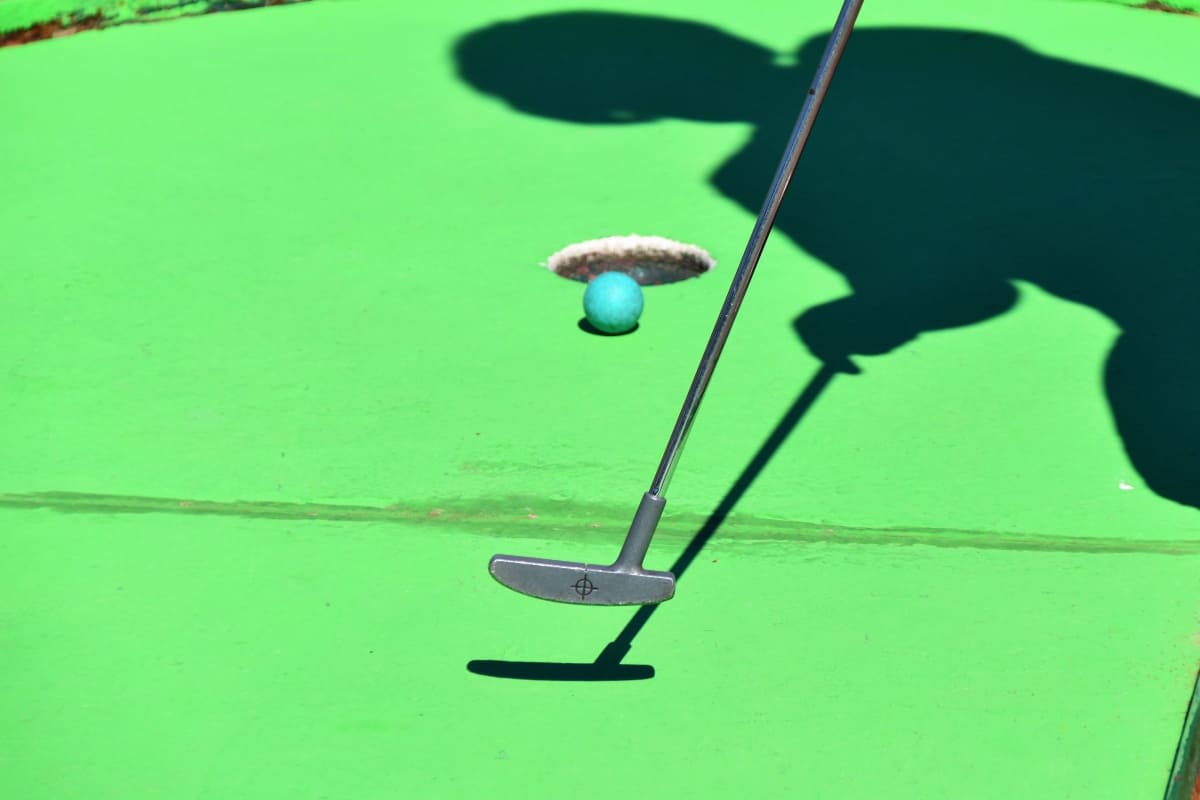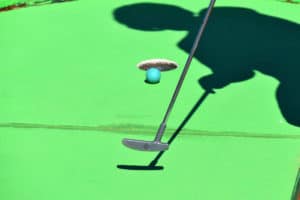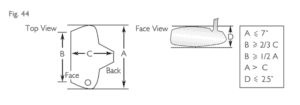Regardless of whether you are an avid golfer or not, chances are you have seen a bullseye putter in your lifetime, as they are the main putter used in mini-golf. Interestingly, despite their long legacy in professional golf, many still wonder if this simple two-way putter is still legal? With so many different rules and equipment regulations, there is no shortage of illegal putters, but is the bullseye putter a part of this group?
Are Bullseye Putters Legal? According to the USGA, because the bullseye putters have identical putting faces on each side of the club, they conform to all of the dimension and surface requirements, making them legal in golf.
Legality Of Bullseye Putter
The USGA has pretty strict criteria when it comes to what qualifies as a legal putter. Technically speaking, a putter that has two striking faces is not allowed in golf. In other words, if a putter has two faces that can be used to make a putt, it is considered illegal. However, if both faces of the putter are identical in dimension, shape, and surface material, then the putter is totally allowed. Within the equipment rules provided by the USGA, they give this specification:
“The club head must have only one striking face, except that a putter may have two such faces if their characteristics are the same, and they are opposite each other.”
There are also a few more specifications that the putter must follow. In addition to the rules above, the club head must conform to the requirements below.
-
Distance from the heel of the putter to the toe of the putter must be greater than the distance from the face to the back (A > C).
-
Distance from the heel of the putter to the toe of the putter must be less than or equal to 7 inches (A ≤7”)
-
Distance from the heel of the putter to the toe of the putter on the face side is greater than or equal to ⅔ the distance from the face of the putter to the back of the head (B ≥ ⅔ C)
-
Distance from the heel of the putter to the toe of the putter is greater than or equal to ½ of the length from the hell to the toe of the head (B ≥ ½ A)
-
Distance from the sole of the putter to the top of the putter head is less than or equal to 2 ½ inches (D ≤ 2 ½”)
While there are even more requirements required for a putter to be deemed legal, these are the ones specific to the head of the putter that must be followed. Essentially, in order to be considered legal, these are all of the requirements that the club head must follow.
How Old Is Your Bullseye Putter?
If you are interested in figuring out the age of your bullseye putter, there are a few ways to tell about how old it is. Although I haven’t found a definitive way to figure out the exact year your bullseye putter has been made, there are indicators that can give you an approximate range as to when your putter was made.
| Description Of Club | Approximate Year |
| Putter has the ‘John Reuter Jr Design’ and Bullseye engraved. | 1957 – 1960 |
| Flange Bullseye Model. | 1967 |
| L-shaped Bullseye with the flange herd. | 1969 |
| Putter has “S” and “C” inside the Bullseye engraving. | 1969 |
| Putter has “Designed by John Reuter Jr” or “John Reuter Jr. Made in the USA engraved. | 1960 – 1974 |
| Putter does not have John Reuter Jr’s name. | 1975 |
| Clubhead has ‘Titleist’ and does not have “Acushnet’ engraved. | 1978 |
Bullseye Putter Codes
The most common type of bullseye putter is the John Reuter Jr putter. Each of these putters has different symbols and codes stamped into the metal on the head of the club. These codes actually represent certain aspects of the club. Check out the table below to see what these codes actually mean.
| Code | Meaning |
| OS/STD | Old Standard/Standard |
| L, MH, H | Light, Medium Heavy, Heavy |
| FL | Flange |
| F | Flat |
| M | Medium |
| U/UP | Upright |
| L 4, 5, 6 | Length 34,35,36 (inches) |
| S | Standard Grip |
| P | Paddle Grip |
What are the benefits of the Bullseye Putter?
After figuring out what makes a bullseye putter legal, you may want to see what the benefits and drawbacks are to using one. This will help you see if this type of putter is the right one for you.
Higher MOI
The Bullseye putter has a pretty evenly distributed weight, meaning that it has a higher MOI (moment of inertia) than other styles of putters. Basically, a higher MOI means that the putter twists less when the ball does not hit the center of the club.
So with a putter like this, you’ll have fewer instances of a closed or open faced putt, ultimately giving you a more consistent putt on your desired line of play. This feature makes it a great choice for beginner or amateur putters that may not consistently hit the ball in the middle of the putter.
Good For Lefties and Righties
Because it has an identical face on both sides it can be used by both left-handed and right-handed golfers. Many other styles of clubs do not have the “dual face” that the bullseye putter has. While many people will never need to use the alternate side of the club, it does offer some advantage for switch putters.
Affordable
While most putters typically have an average price of a putter is around $200, the typical price of a bullseye putter is below $100. This makes it an awesome club for new golfers that just want to get a hang of the sport without investing too much money upfront.
Final Thoughts: Bullseye Putters
I’ve used a bullseye putter several times when playing. I must admit, the club is very simple and is extremely forgiving. While they may not be as flashy or technically advanced as many of the newer putters today, they still get the job done (not to mention at a fraction of the price). Overall, if you are not sure whether or not to purchase one, I’d say go for it; even if you don’t use it all the time, it is such a handy club to have in the bag.





